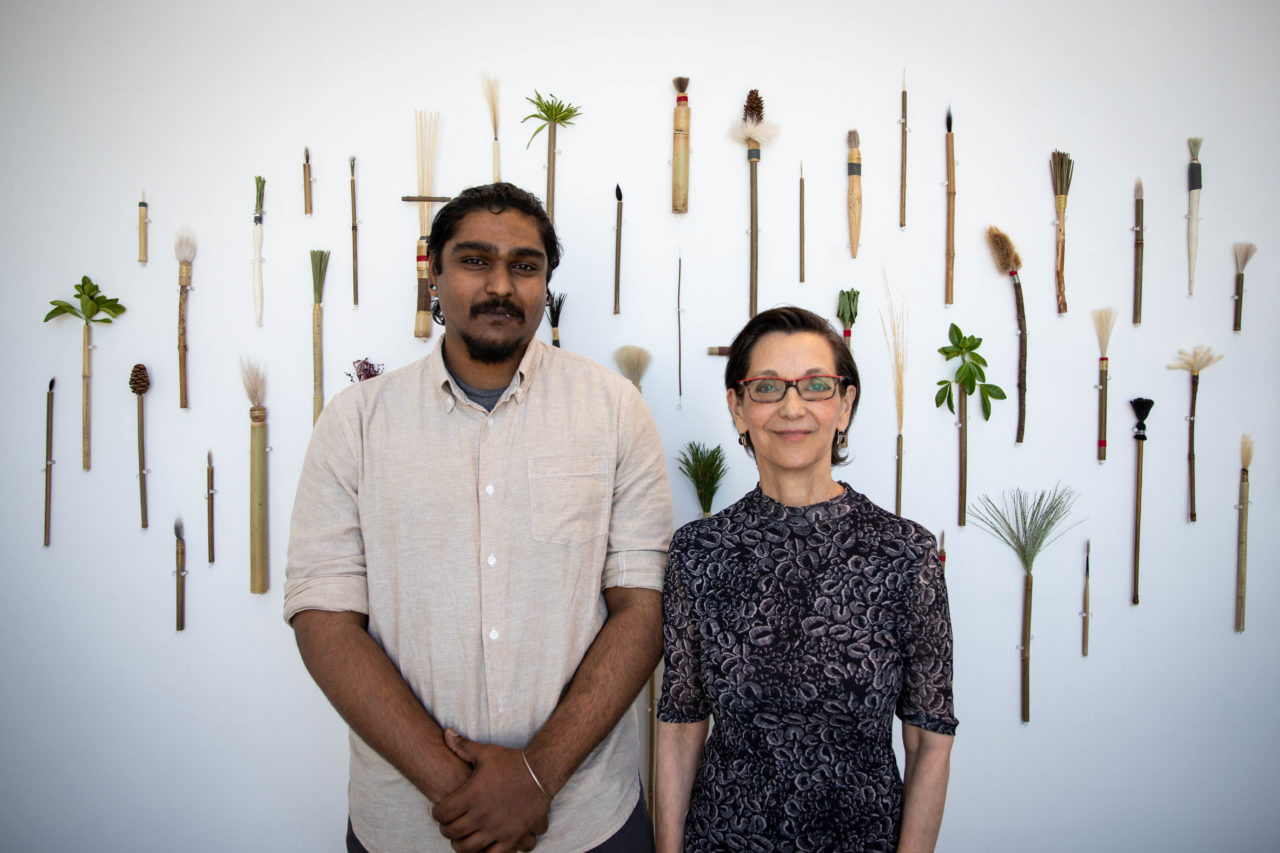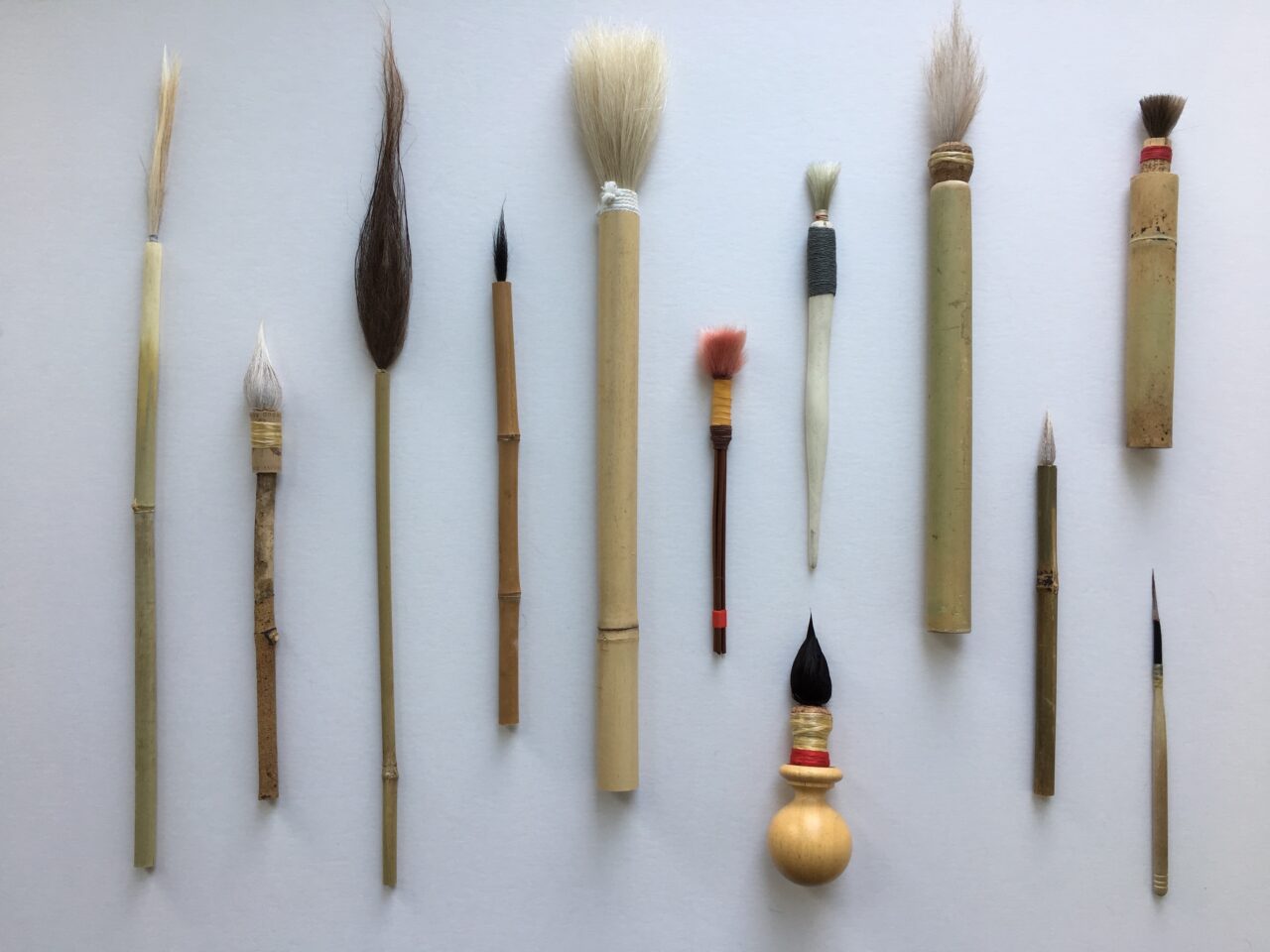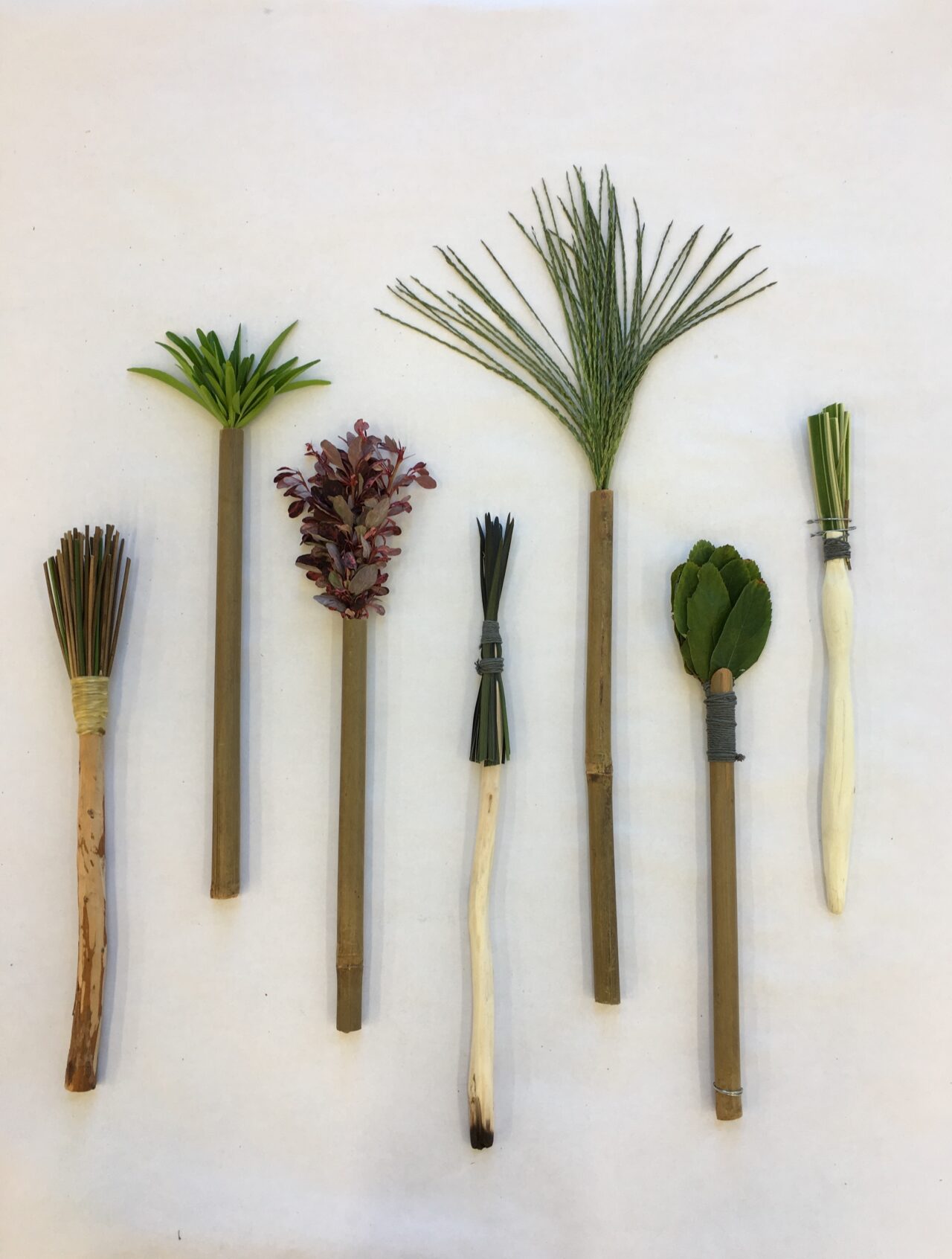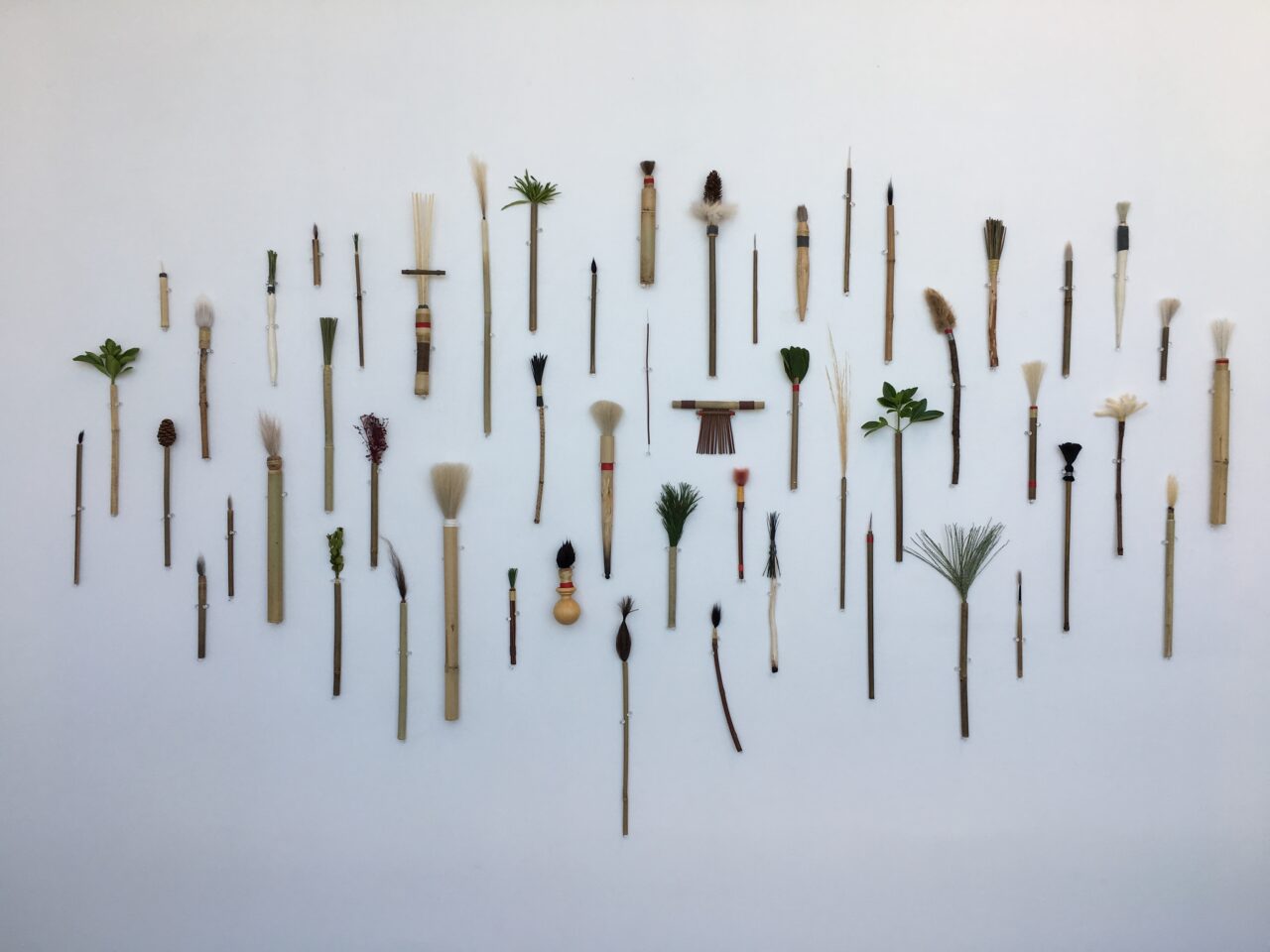Towards an Ecology of Place

Posted on | Updated
DIY brush making is part of resilient material practice, says artist and ศซร๑ฒสฦฑ faculty member Mimi Gellman
A brush-making tutorial aimed at empowering locked-down visual artists has joined a broader continuum of arts teachings emphasizing material ingenuity and self-reliance, says artist and ศซร๑ฒสฦฑ associate professor Mimi Gellman.
, begun over the summer with help from ศซร๑ฒสฦฑ graduate student Yaaz Pillay, provides video and PDF tutorials for using materials of just about any kind to create brushes with unique mark-making capabilities โ a vital lesson as many artists face barriers to purchasing pricey brushes from retail outlets.
โHaving to rely on art supply stores doesnโt provide the opportunity to extend our abilities to problem solve, be creative and more self-reliant,โ Mimi says.
โThe thing that I get so excited about is how nimble we can be in the face of obstacles. At this moment, when everything seems to be closing down and we have less of the access weโre accustomed to, in what ways might we have more of a different kind of access? What possibilities are opened up?โ

With materials gathered from around the campus grounds and elsewhere in Vancouver โ as well as by gracious donation from the โ Mimi and Yaaz created a collection of more than 50 brushes. Some include materials as rare as bear and wolf fur, while others make use of ubiquitous plants such as grass, pinecones, and stinging nettle. Halved corks, whittled branches, fishing line and corn silk also make appearances in the wildly innovative set of tools.
Mimi emphasizes that materials neednโt be chosen for their perceived technical value; rather, any material an artist has on hand could work. The best way to use a particular grass, fur or other material in brush-making is something an artist will learn as they work with it.
โItโs in the process that you learn to understand materials. The materials themselves will tell you how to use them,โ Mimi says, pointing to a range of recent online courses and mentorship initiatives at ศซร๑ฒสฦฑ as examples of likeminded programming.

Courses from artists and faculty members Russna Kaur, Sara-Jeanne Bourget and Mark Johnsen all encouraged closer attention to immediate surroundings, and open-mindedness to the use of non-traditional, found and household materials in art-making as ways of developing personal narrative in a practice, Mimi notes. The , led by Emily Smith under the banner of the , likewise emphasizes social and ecological ethics as a backbone for sustainable and independent material practice, she adds.
โI think all of these activities are beginning to establish, for us at Emily Carr, an ecology of place,โ Mimi says.
โThese experiences that weโre having as a community are telling us to slow down and look more closely โฆ What I see is an opportunity to develop our interdependence and self-reliance, and to encourage learning in a much deeper, more meaningful way.โ
You can , online.
